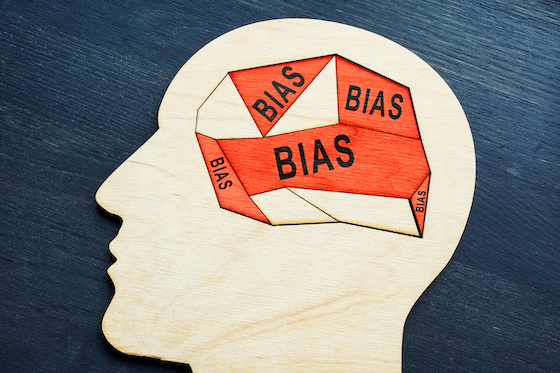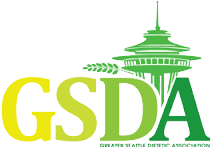Addressing Implicit Bias in the Nutrition Profession

By Erin Cazel, MS Nutrition, Bastyr University 2023
GSDA Diversity Co-Chair
Implicit bias describes the automatic, unconscious associations we make and attitudes we have in regard to a specific group of people. Implicit biases are embedded into our subconscious as a result of our experiences and exposures, developing as our brain organizes information about the world around us. We don’t choose to develop implicit biases, and we’re largely blind to their existence. In fact, they develop in spite of our intent and in the face of our deeply-held values. In this way, implicit biases differ from racism (or sexism, or ageism, or ableism) which is conscious, externalized prejudice. But implicit bias is no less problematic because it still influences the decisions we make and the attitudes we carry. This has profound implications for us as healthcare providers.
For example, eating disorders are significantly under-diagnosed among people of color and in other marginalized groups, even though research consistently shows that anorexia occurs at similar rates among all demographic groups and genders, and that bulimia and binge eating disorders occur at higher rates among Black and Brown communities in the US. While the causes here are certainly multifactorial, a 2006 study confirmed that bias plays a significant role in this dangerous trend.1
In this study, 91 clinicians were asked to read a passage describing the disturbed eating patterns of a fictional character named Mary.1 They were then asked whether they thought Mary had a problem and to rate her anxiety, depression, and eating disorder symptoms.1 Less than half of the clinicians in the study correctly identified that Mary had an eating disorder, but the rate of diagnosis dropped drastically (from 44% to 17%) if Mary was portrayed as Black instead of white, even though all other details were kept constant.1
This study demonstrates the real-world impact of implicit bias. Historically, eating disorders have been associated with affluent, young, cis-gender, white females. This has led to a culturally-embedded implicit bias against recognizing eating disorder symptoms among individuals that fall outside those parameters. We all hold implicit biases. Implicit bias doesn’t make us racist or sexist in and of itself. But it does unconsciously inform the decisions we make about an individual – for example, our assumptions about a client’s food and lifestyle preferences, our initial thoughts about the underlying reason for a client’s health status, or our perception of the severity of a client’s condition. As nutrition professionals committed to client-centered care, it is imperative that we take steps to become aware of and redress implicit biases.
How? First, take an Implicit Association Test (or several!). Available for free online, these simple and quick online quizzes were developed by researchers to measure unconsciously held associations. There are multiple IATs addressing more than a dozen social attitudes, including race, gender, sexuality, skin tone, disability, and body size. There’s even a separate Project Implicit Health that measures automatic reactions in regard to anxiety, depression, alcohol, exercise, eating, and mental illness.
Second, maintain an attitude of curiosity about the results of your tests. How did you feel when taking the test? When receiving the results? Can you think of life experiences that may have influenced the development of your implicit bias?
Third, commit to conscious improvement. Identify the ways that implicit bias manifests in your own attitudes and actions. Make these into a list, and reflect on what you observed. Then set specific goals in regard to behavior change and evaluate consistently. This may be easier to accomplish by enlisting the support and feedback of those around you.
Engaging in media and events that challenge the assumptions of implicit bias can also support goals for growth. For example, Diversify Dietetics is an organization committed to increasing ethnic and racial diversity in the field of nutrition and dietetics. This past May, they hosted a virtual summit with the theme “Culturally Humble Care in Action.” Visit their website to sign up for their newsletter to stay abreast of upcoming events and learn from a wide range of nutrition leaders of color!
Implicit biases are blindspots by definition, making them challenging to address. But they exist for everyone whether or not we see or acknowledge them, and indeed can impart the most damage when they remain under the radar. As nutrition professionals, it is crucial that we expose implicit biases in our lives and invest in eroding their strength and influence. The health and wellbeing – and even the lives – of our clients are on the line.
Reference:
1. Gordon, K. H., Brattole, M. M., Wingate, L. R., & Joiner, T. E., Jr (2006). The impact of client race on clinician detection of eating disorders. Behavior therapy, 37(4), 319–325. https://doi.org/10.1016/j.beth.2005.12.002
